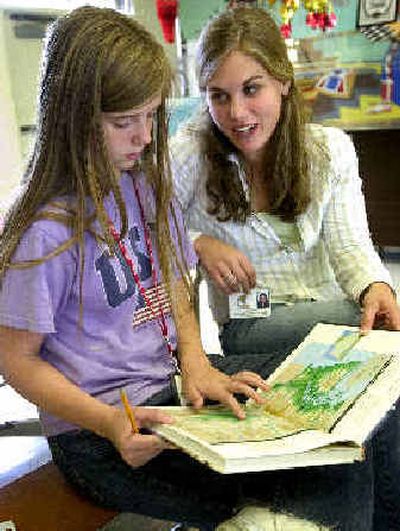Schools get $8.3 million to help at-risk students

An $8.3 million federal grant will likely change how Spokane County schools reach students who are in danger of slipping away.
Spokane Public Schools, in partnership with five other Spokane County school districts, was one of 24 applicants in the nation Wednesday to be awarded a “Safe Schools/Healthy Students” grant from the U.S. Department of Education.
Through a variety of countywide programs, the three-year grant is intended to reduce substance abuse, reduce school violence, improve attendance and improve student mental health access.
At Spokane Public Schools alone, the grant will create 20 new positions, including mental health workers in the schools.
Among the more visible changes from the grant will be the reinstatement of the popular after-school HUBS programs, which went away when grant funding ran out in 2002 and budget cuts forced the district to reorganize.
The grant will bring back a HUBS program to the Spokane Public Schools’ six middle schools.
The era of smaller budgets has forced schools to look for new ways to do their jobs, said Wendy Bleecker, Spokane Public Schools’ coordinator of student support services.
The Department of Education awarded the 24 grants for new partnerships with community mental health agencies, law enforcement and juvenile justice systems.
The only other grant awarded in the Northwest went to the Lapwai School District on the Nez Perce Indian Reservation near Lewiston. The district received almost $3 million.
The Spokane grant is expected to usher in an era of closer relationships between school districts and supporting agencies that work with young people, Bleecker said.
To apply for the grant, the schools formed partnerships with Spokane Police, Spokane County Sheriff’s Office, juvenile court and county mental health specialists.
The other participating districts are Cheney, Nine Mile Falls, Medical Lake, Deer Park and Riverside. Together with Spokane Public Schools, they include more than 43,000 students, 17,000 families and 6,600 staff members.
Over the next three years, these six areas will be the grant’s focus:
• Increase law enforcement involvement in the schools and develop crisis plans.
• Reduce youth violence by working with juvenile detention services to develop a countywide truancy process to keep kids in school and out of trouble.
• Provide mental health services in schools. Students who need services and don’t meet Medicaid eligibility will receive them anyway under the grant.
• Focus on early childhood education from birth to age 4 to help students develop.
• Expand substance abuse prevention and intervention in the schools through staff training and student education programs.
• Create countywide standards related to positive discipline, which is sometimes called restorative justice. For instance, in a case of damaging school property, a student would fix the damage rather than simply receive punishment.
Astri Zidack, director of the Center for Prevention Programs for Educational School District 101, co-wrote the grant with Bleecker.
“We hope to cover the county in new training opportunities,” Zidack said.
In years past, Zidack and Bleecker wrote applications for this grant individually. Neither was chosen. Last year, they joined forces and it paid off.
In all, 271 applications were submitted from around the country.
“The competition is very high,” Ziback said. “We knew it had to be absolutely perfect to be funded.”
A survey of student needs was done for the application process. What emerged was the realization that the ethnic minority and foreign students, like the Russian populations, received a disproportionate amount of discipline from juvenile detention services, Zidack said.
In all, 21 percent of the diverse student body was in juvenile services, while making up about 12 percent of the population, she said.
It’s unclear why that is the case, she said. There could be a number of reasons.
“We believe it could be some of our practices and our cultural understandings,” Zidack said.
The grant, she hopes, will help the schools better address student needs from the diverse communities.
It will take about two months to start hiring for new positions and moving changes along.
“We’re all ready,” Bleecker said. “That’s what’s so exciting about it because we can make a difference for all the kids in Spokane, in Deer Park, in Cheney … ” and on, she said.